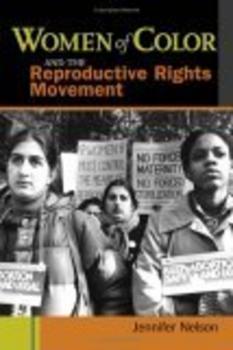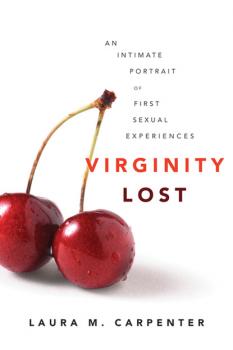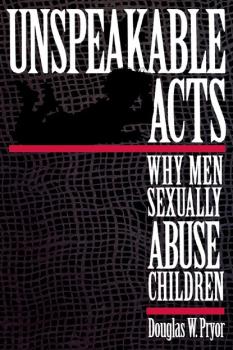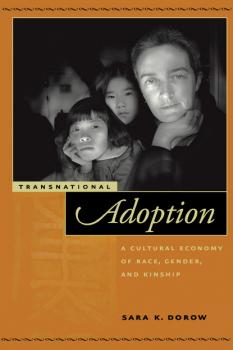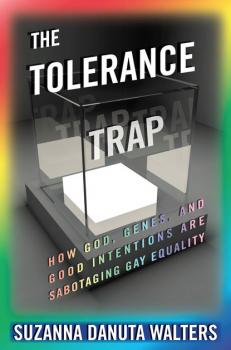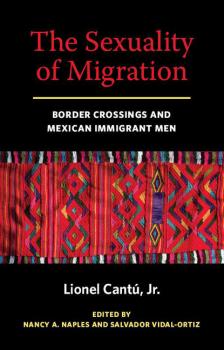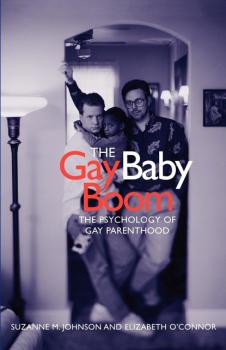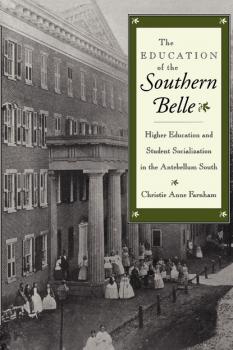ТОП просматриваемых книг сайта:
Управление, подбор персонала
Различные книги в жанре Управление, подбор персонала, доступные для чтения и скачиванияАннотация
While most people believe that the movement to secure voluntary reproductive control for women centered solely on abortion rights, for many women abortion was not the only, or even primary, focus.Jennifer Nelson tells the story of the feminist struggle for legal abortion and reproductive rights in the 1960s, 1970s, and early 1980s through the particular contributions of women of color. She explores the relationship between second-wave feminists, who were concerned with a woman's right to choose, Black and Puerto Rican Nationalists, who were concerned that Black and Puerto Rican women have as many children as possible “for the revolution,” and women of color themselves, who negotiated between them. Contrary to popular belief, Nelson shows that women of color were able to successfully remake the mainstream women's liberation and abortion rights movements by appropriating select aspects of Black Nationalist politics—including addressing sterilization abuse, access to affordable childcare and healthcare, and ways to raise children out of poverty—for feminist discourse.
Аннотация
Before 1970 Oman was one of teh more isolated countries on the Arab peninsula. The growth of the oil economy during the seventies, however, has brought rapid change to the small towns and villages that make up the country. In Women and Community in Oman Chritine Eickelman captures the tone and feel of this desert culture on the verge of substantial, and probably irreversible, change. During 1979 and 1980 she lived in Hamra, an oasis of 2,500 persons and the capital of the Abriyin tribe. Situated on the western edge of the Jabal al-Akhdar region of inner Oman, this was formerly one of the most inaccessible areas of the peninsula. Eickelman lived there among the people of Hamra, visiting Omani, this was formerly one of the most inaccessible areas of the peninsula. Eickelman lived there among the people of Hamra, visiting Omani homes, and speaking daily with the men and women – especially the women. The result is a lively and very personal firsthand account of day-to-day life in the Omani interior. The book looks at the practical changes in the life of the Omanis, and at the roles, concerns, and aspirations of the women there. Eickelman explores key concepts in the Omani community and family life, from choosing a spouse and «negotiating» a marriage to giving birth and raising children; from work and status within the community to rituals, mores and sociability in the neighborhood. Eickelman's study stands as a discriminateing and sympathetic view of a sturdily independent culture. This perceptive and informative account will be of lasting importance and interest to Middle East specialists, anthroupoligists, those concerned with women's studies, and to al persons who want to learn more about the implications of political and social change in the Third World.
Аннотация
Nervous, inexperienced, confused. For most, losing your virginity is one of life's most significant moments, always to be remembered. Of course, experiences vary, but Laura Carpenter asks: Is there an ideal way to lose it? What would constitute a “positive” experience? What often compels the big step? And, further, what does “going all the way” really mean for young gays and lesbians?In this first comprehensive study of virginity loss, Carpenter teases out the complexities of all things virgin by drawing on interviews with both young men and women who are straight, gay or bisexual. Virginity Lost offers a rare window into one of life's most intimate and significant sexual moments. The stories here are frank, poignant and fascinating as Carpenter presents an array of experiences that run the gamut from triumphant to devastating.Importantly, Carpenter argues that one's experience of virginity loss can have a powerful impact on one's later sexual experiences. Especially at a time of increased debate about sexual abstinence versus safe sex education in public schools, this important volume will provide essential information about the sex lives of young people.
Аннотация
The sexual abuse of children is one of the most morally unsettling and emotionally inflammatory issues in American society today. It has been estimated that roughly one out of every four girls and one in ten boys experience some form of unwanted sexual attention either inside or outside the family before they reach adulthood. How should society deal with the sexual victimization of children? Should known offenders be released back into our communities? If so, where, and with what rights, should they be allowed to live? In Unspeakable Acts , Douglas W. Pryor argues that much of this debate, designed to deal with abusers after they have offended, ignores the important issue of why men cross these forbidden sexual boundaries to molest children in the first place and how the behavior can possibly be prevented before it starts. Incorporating in-depth interviews with more than thirty convicted child molesters, Pryor explores how men become involved with breaking sexual boundaries with children. He looks at how their lives prior to offending contributed to and led up to what they did, the ways that initial interest in sex with children began, the tactics offenders employed to molest their victims over time, how they felt about and reacted to their behavior between offending episodes, and how they were ultimately able to stop. The author expands our understanding of this often reviled, little understood group, leaving us with the uneasy conclusion that the moral wall separating us from what is defined as extreme, sick behavior is not as opaque as we would like to believe.
Аннотация
Each year, thousands of Chinese children, primarily abandoned infant girls, are adopted by Americans. Yet we know very little about the local and transnational processes that characterize this new migration. Transnational Adoption is a unique ethnographic study of China/U.S. adoption, the largest contemporary intercountry adoption program. Sara K. Dorow begins by situating the popularity of the China/U.S. adoption process within a broader history of immigration and adoption. She then follows the path of the adoption process: the institutions and bureaucracies in both China and the United States that prepare children and parents for each other; the stories and practices that legitimate them coming together as transnational families; the strains placed upon our common notions of what motherhood means; and ways in which parents then construct the cultural and racial identities of adopted children.Based on rich ethnographic evidence, including interviews with and observation of people on both sides of the Pacific—from orphanages, government officials, and adoption agencies to advocacy groups and adoptive families themselves—this is a fascinating look at the latest chapter in Chinese-American migration.
Информация о книге
Автор произведения Sara K. Dorow
Жанр Управление, подбор персонала
Серия Nation of Nations
Аннотация
From its Magic Kingdom theme parks to its udderless cows, the Walt Disney Company has successfully maintained itself as the brand name of conservative American family values. But the Walt Disney Company has also had a long and complex relationship to the gay and lesbian community that is only now becoming visible. In Tinker Belles and Evil Queens , Sean Griffin traces the evolution of this interaction between the company and gay communities, from the 1930s use of Mickey Mouse as a code phrase for gay to the 1990s «Gay Nights» at the Magic Kingdom. Armed with first-person accounts from Disney audiences, Griffin demonstrates how Disney animation, live-action films, television series, theme parks, and merchandise provide varied motifs and characteristics that readily lend themselves to use by gay culture. But Griffin delves further to explore the role of gays and lesbians within the company, through an examination of the background of early studio personnel, an account of sexual activism within the firm, and the story of the company's own concrete efforts to give recognition to gay voices and desires. The first book to address the history of the gay community and Disney, Tinker Belles and Evil Queens broadly examines the ambiguous legacy of how modern consumerism and advertising have affected the ways lesbians and gay men have expressed their sexuality. Disney itself is shown as sensitive to gay and lesbian audiences, while exploiting those same audiences as a niche market with strong buying power. Finally, Griffin demonstrates how queer audiences have co-opted Disney products for themselves-and in turn how Disney's corporate strategies have influenced our very definitions of sexuality.
Аннотация
From Gleeto gay marriage, from lesbian senators to out gay Marines, we have undoubtedlyexperienced a seismic shift in attitudes about gays in American politics andculture. Our reigning national story isthat a new era of rainbow acceptance is at hand. But dig a bit deeper, and thisseemingly brave new gay world is disappointing. For all of the undeniable changes,the plea for tolerance has sabotaged the full integration of gays into Americanlife. Same-sex marriage is unrecognized and unpopular in the vast majority ofstates, hate crimes proliferate, and even in the much vaunted “gay friendly”world of Hollywood and celebrity culture, precious few stars are openly gay. In TheTolerance Trap, Suzanna Walterstakes on received wisdom about gay identities and gay rights, arguing that weare not “almost there,” but on thecontrary have settled for a watered-down goal of tolerance and acceptancerather than a robust claim to full civil rights. After all, we tolerate unpleasant realities: medicinewith strong side effects, a long commute, an annoying relative. Drawing on avast array of sources and sharing her own personal journey, Walters shows howthe low bar of tolerance demeans rather than ennobles both gays and straightsalike. Her fascinating examination covers the gains in political inclusion andthe persistence of anti-gay laws, the easy-out sexual freedom of queer youthand the suicides and murders of those in decidedly intolerant environments. Shechallenges both “born that way” storylines that root civil rights in biology,and “god made me that way” arguments that similarly situate sexuality as innateand impervious to decisions we make to shape it. A sharp and provocative cultural critique, thisbook deftly argues that a too-soon declaration of victory short-circuits fullequality and deprives us all of the transformative possibilities of fullintegration. Tolerance is not the endgoal, but a dead end. In The ToleranceTrap, Walters presents a complicated snapshot of a world-shifting moment inAmerican history—one that is both a wake-up call and a call to arms for anyoneseeking true equality.
Информация о книге
Автор произведения Suzanna Danuta Walters
Жанр Управление, подбор персонала
Серия Intersections
Аннотация
Winner of the 2010 Distinguished Book Award from the American Sociological Association, Sociology of Sexualities Section </p Winner of the 2010 Distinguished Book Award in Latino Studies Honorable Mention from the Latin American Studies Association The Sexuality of Migration provides an innovative study of the experiences of Mexican men who have same sex with men and who have migrated to the United States.Until recently, immigration scholars have left out the experiences of gays and lesbians. In fact, the topic of sexuality has only recently been addressed in the literature on immigration. The Sexuality of Migration makes significant connections among sexuality, state institutions, and global economic relations. Cantú; situates his analysis within the history of Mexican immigration and offers a broad understanding of diverse migratory experiences ranging from recent gay asylum seekers to an assessment of gay tourism in Mexico. Cantú uses a variety of methods including archival research, interviews, and ethnographic research to explore the range of experiences of Mexican men who have sex with men and the political economy of sexuality and immigration. His primary research site is the greater Los Angeles area, where he interviewed many immigrant men and participated in organizations and community activities alongside his informants.Sure to fill gaps in the field, The Sexuality of Migration simultaneously complicates a fixed notion of sexual identity and explores the complex factors that influence immigration and migration experiences.
Информация о книге
Автор произведения Lionel Cantu
Жанр Управление, подбор персонала
Серия Intersections
Аннотация
The gay and lesbian community is experiencing a baby boom. Advances in gay rights coupled with increased availability of alternative reproduction techniques have led to an unprecedented number of openly gay and lesbian parents. Estimates are that between 6 and 14 million children in the United States are being raised by at least one parent who is gay. Yet, very little is known about how gay or lesbian headed families function, or whether they differ in any relevant ways from families headed by straight parents. Written by two developmental psychologists, The Gay Baby Boom reports the findings of The Gay and Lesbian Family Study, the largest national assessment of gay and lesbian headed families. By asking participants detailed questions about the way they parent, the authors are able to describe for the first time exactly what takes place within gay and lesbian headed families across the county. Traditional research has tended to assume that there is something uniquely different and potentially psychologically damaging about children being raised by gays. The authors draw on their data to show these fears unfounded.
Аннотация
The American South before the Civil War was the site of an unprecedented social experiment in women's education. The South offered women an education explicitly designed to be equivalent to that of men, while maintaining and nurturing the gender conventions epitomized by the ideal of the Southern belle. This groundbreaking work provides us with an intimate picture of the entire social experience of antebellum women's colleges and seminaries in the South, analyzing the impact of these colleges upon the cultural construction of femininity among white Southern women, and their legacy for higher education. Christie Farnham investigates the contradiction involved in using a male-defined curricula to educate females, and explores how educators denied these incongruities. She also examines the impact of slavery on faculty and students. The emotional life of students is revealed through correspondence, journals, and scrapbooks, highlighting the role of sororities and romantic friendships among female pupils. Farnham ends with an analysis of how the end of the Civil War resulted in a failure to keep up with the advances that had been achieved in women's education. The most comprehensive history of this brief and unique period of reform to date, The Education of the Southern Belle is must reading for anyone interested in women's studies, Southern history, the history of American education, and female friendship.

